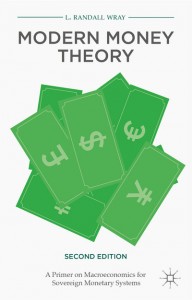Reactions to S&P Downgrade: S&P Analyst Confirms There Is No Solvency Issue
by Felipe Rezende
In previous posts (see here and here), I discussed Standard & Poor’s (S&P) downgrade of Brazil’s long-term foreign currency sovereign credit rating to junk status, that is, to ‘BB+’ from ‘BBB-‘, and its decision to downgrade Brazil’s local currency debt to a single notch above “junk” status.
S&P hosted a conference call on Monday morning to explain its downgrade of Brazil’s credit rating (you can view the video webcast replay here). During the conference call I had the opportunity to ask a couple of questions. My first question, to S&P analyst Lisa Schineller, at around the 41:53 minute mark, was the following:
Question: “Are there solvency risks associated with Brazil’s local currency debt? Brazil issues its own currency.”
[Lisa Schineller]: “We would not say there are solvency risks, we rate, for both local currency and foreign currency, our ratings are continuum. Yes, we lowered both ratings, we are by no means thinking about a solvency issue here and risks there. There is less policy flexibility at hand, these ratings for the local currency BBB- is still in the investment grade category and the foreign currency is at the high end of the speculative grade category. I think this is an important point to highlight. There is this increase in the stress in the economy, in the policy execution, but it is very different than talking a solvency issue.”
That is, as the S&P analyst confirmed, there are no solvency risks. In its sovereign ratings methodology S&P looks at “sovereign government’s willingness and ability to service its debt on time and in full.” Standard & Poor’s sovereign rating is:
A current opinion of the creditworthiness of a sovereign government, where creditworthiness encompasses likelihood of default and credit stability (and in some cases recovery). (Lisa Schineller)
As I explained in my previous posts (see here and here), there is no credit risk in obligations denominated in the domestic currency, that is, the risk of payments not being made on government debt denominated in Reais is zero. Why? Because Brazil’s local currency debt outstanding promise to pay Reais and the federal government is the monopoly issuer of currency (Rezende 2009).
My second question to Lisa Schineller, at around the 52:05 minute mark, was the following:
Question: What is the sovereign’s ability and willingness to its service financial obligations to nonofficial (commercial) creditors for a country that has more assets denominated in foreign currency than debt? The government can pay all of its obligations in foreign currency. continue reading…





 ShareThis
ShareThis